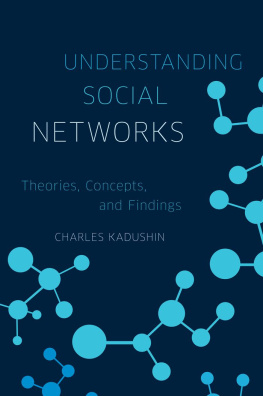Social Networks
Humans are the most social of all animals, learning from and being interdependent with many others, thereby forming relationships that span our complex world-society. Understanding humans and humanity therefore requires comprehending social relations, which may be hard to grasp systematically. Fortunately, the variety and turmoil of social relations can be mapped out as clear-cut networks. With the aid of network theory, characteristics of social life, such as small worlds, highly skewed distributions of sexual and other social contacts, and the structure of social inequality and cohesion, can be explained for the first time. Furthermore, not yet well-understood phenomena can be grasped more clearly, such as organizations, and the growth and diffusion of knowledge. Many social network models are also applicable to, or inspired by, other fields, such as economics, biology, political science, statistical physics, and organization science.
This book introduces social networks to a general audience from novices in all kinds of fields to experts wanting to catch up, and from academics to practitioners in consultancy, management, policy, and social work. Sophisticated models are clearly explained without the use of math (which is further clarified separately in boxes, footnotes, and references), and are illustrated with network diagrams and examples ranging from anthropology to organizational sociology. A free and easy-to-use software tool is explained in the final chapter so readers themselves can depict and analyze networks of their interest.
Jeroen Bruggeman is Assistant Professor in the Department of Sociology and Anthropology at the University of Amsterdam.
Social Networks
An introduction
Jeroen Bruggeman
First published 2008
by Routledge
2 Park Square, Milton Park, Abingdon, Oxon, OX14 4RN
Simultaneously published in the USA and Canada
by Routledge
270 Madison Avenue, New York, NY 10016
Routledge is an imprint of the Taylor & Francis Group, an informa business
2008 Jeroen Bruggeman
All rights reserved. No part of this book may be reprinted or reproduced or utilised in any form or by any electronic, mechanical, or other means, now known or hereafter invented, including photocopying and recording, or in any information storage or retrieval system, without permission in writing from the publishers.
British Library Cataloguing in Publication Data
A catalogue record for this book is available from the British Library
Library of Congress Cataloging in Publication Data
Bruggeman, Jeroen.
Social networks : an introduction / Jeroen Bruggeman.
p. cm.
Includes bibliographical references.
1. Social networks. I. Title.
HM741.B78 2008
302.4072dc22
2007051263
ISBN 13 9780415458030 (pbk)
ISBN 13 9780415458023 (hbk)
ISBN 13 9780203930465 (ebk)
ISBN 10 041545803X (pbk)
ISBN 10 0415458021 (hbk)
ISBN 10 0203930460 (ebk)
Photograph on the cover by the author (2007), Saint-Louis, Senegal.
Illustrations
FIGURES
TABLES
Acknowledgements
In the course of teaching social networks and writing this book, I posed questions to numerous scholars. For their answers and comments I am indebted to Albert-Lszl Barabsi, Jrg Reichardt, Mark Newman, James Moody, Ron Burt, Gianluca Carnabuci, Eugene Johnsen, Andrej Mrvar, Joost Beuving, Eelke Heemskerk, Devon Brewer, Tamas Vicsek, Tom Snijders, Meredith Rolfe, Alja Ule, Michael Kearns, Vincent Traag, Rob Mokken, Lada Adamic, Herman van der Werfhorst, Johan de Deken, Gerben Korthouwer, Oana Postolache, Beate Vlker, Javier Augusto Loaiza, Thomas Valente, Giuseppe Labianca, Catarina Dutilh Novaes, and Natalie Glance. Douglas White and Duncan Watts also gave invaluable moral support, in addition to their valuable comments. Gbor Csrdi was fantastic in adapting his igraph package and graphical user interface to my requests. Jrg Reichardt generously donated his spin glass algorithm to Gbors igraph package, and now everybody can use it. Joost Beuving negotiated us into the car market and harbor of Cotonou (), and for her love.
Chapter 1
Introduction
Social Relations
Humans are more cooperative with non-kin and exchange more information than all other animals, with large ramifications for their societies, which eventually became a globe-spanning network. Their pro-sociality enables them to specialize in few activities, and renders them dependent on others for their remaining needs and desires to be fulfilled (Smith 1986). Consequently, one might think of individuals as free-floating atoms in markets where they exchange goods and services. On closer inspection, however, humans rather prefer to affiliate themselves with others in groups and communities of all sorts, such as families, settlements, religions, organizations, and sometimes virtual communities as well. Even if they engage in seemingly free market transactions, these transactions are embedded in institutions beyond bilateral relations, e.g. property rights (Granovetter 1985; North 1990). As part of their gregariousness, humans also learn most of what they know from others, including from the media these others may use. Humans are able collectively to support each other and to invent and produce on an unprecedented scale, but also to harm each other and their natural environment (Tinbergen 1968). For better and for worse, people are profoundly influenced by others for most of what they have, know, and do. These interdependences imply neither that people react to information or influence in a uniform way nor that everybody becomes similar. They do imply, however, that, when we attempt to comprehend humans, studying them in their social environment is much more illuminating than seeing them only as individuals. We should therefore focus on social relations in the most general sense (Emirbayer 1997; Elias 1970). Without studying these relations, social phenomena such as religious practices, collective violence, technological innovations, searching resources, and tastes in music and fashion would not be comprehensible, since they cannot be reduced to properties of individuals (Hedstrm 2006), just as music cannot be appreciated if it is perceived as a series of individual notes. Therefore only The meanings assigned to these experiences, in turn, are also of interest to social workers, consultants, and other practitioners.
Relations Represented as Networks: Overview
Comprehending the raw complexity of social relations beyond a very small number of people is not feasible without conceptual tools. In this book we will see how social relations can be systematically and clearly represented as networks. A network can depict in a single graph a multitude of interactions between many people, which might have taken place at different times and places. In the words of Jeremy Boissevain (1979), Network analysis asks questions about who is linked to whom, the content of the linkages, the pattern they form, the relation between the pattern and behaviour, and the relation between the pattern and other social factors. From a network perspective we will investigate human society. We will see that there exist patterns of relations that are crucial for the flows of information, influence, goods, and contagious diseases, that hardly anyone could imagine before they were discovered. We will focus in particular on communities in the broadest sense, because they lie at the core of human sociality. Communities and their overlaps can be detected on the basis of relational data only, without information about individuals attributes. A case in point is a group partitioned into two opposing coalitions by conflict. We will also see how a communitys social cohesion can be measured. From a cultural-evolutionary perspective we will then discuss why people engage extensively in communities and in the maintenance of seemingly inefficient social relations, in contrast to living by arms-length market relations alone. Then we will shift our focus from communities to individuals and see how people can get access to resources by being connected to others. People as community members can at the same time collaborate for collective goals, while their network positions enable them to broker information and to achieve power and status, leading to social inequality. In these network positions they have certain roles, seen as typical patterns of relations, which can be assessed precisely. Our focus on individuals will also point out why new culture is most likely to be created at the interstices of (sub) communities, where information brokers reside. Newly created knowledge can diffuse through communities by several mechanisms of transmission that we will point out. Organizations, which may be regarded as special-purpose communities, are treated at greater length than other kinds of community because many of us work in or for them, and everybody has to deal with them sometimes. Finally, we will show how to use the computer to analyze social networks, and will provide guidelines for data collection. For those who are new to networks, the approach taken might be an unfamiliar but hopefully illuminating way to look at familiar social and sociological problems.







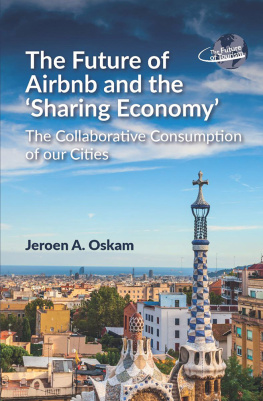
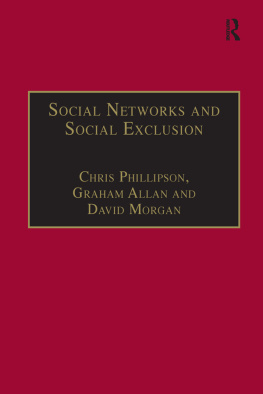


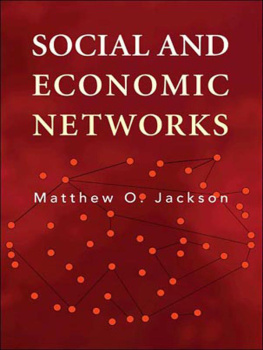


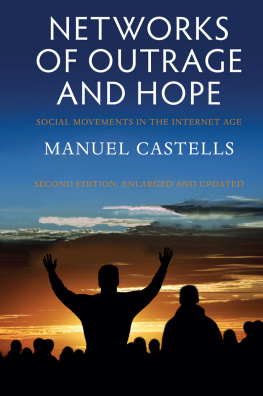
![Jeroen Janssens [Jeroen Janssens] - Data Science at the Command Line](/uploads/posts/book/119617/thumbs/jeroen-janssens-jeroen-janssens-data-science-at.jpg)
